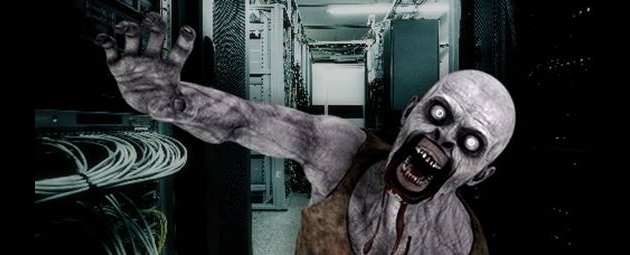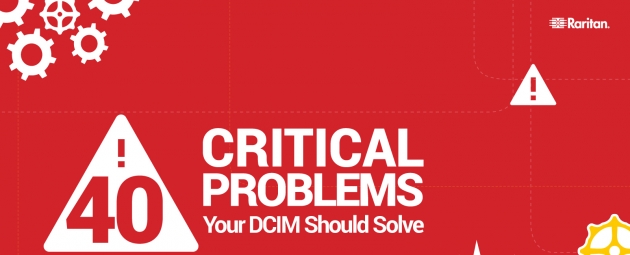部落格
主頁 » 部落格 » What to do with your Zombie and Ghost Servers?
What to do with your Zombie and Ghost Servers?
Posted on March 4, 2015 by Gento

You know those servers that you have out in your data center, powered up but doing nothing? What do you do with them? While you can simply just let them continue running in your data center, they can actually cost you more than you think. Consider that a typical five year old server, that is not ENERGY STAR compliant could consume 175 watts at idle. If 10% of the servers in a 1000 server data center are ghost servers, and electricity costs $0.15/kwh, it equates to roughly $23,000 of un-necessary expense not including your cooling expenses. So what do you do? Do you take the risk and power them down, decommission them, and deal with potential screaming and risk of loss of operations later? Probably not.
The first thing you might want to do is to create a plan of action. Identify which servers are actually idle or under-utilized, where they are physically located and their associated owners. Without a Data Center Infrastructure Management (DCIM) solution, this could require manual work. For instance you may have to lookup excel files that store the information on the old servers, go to the data center to audit and verify information/existence, deploy power monitoring or server workload tools to verify utilization rates, find owners, etc. Unfortunately, even if the information is available, it may likely be out-of-date.
Rather than taking the drastic step of randomly shutting zombie servers down, companies like Barclay’s and Bloomberg have put strategic plans in place that have garnered company wide acceptance. The steps that have made them successful include: designing a workflow diagram agreed to by all stakeholders, automating the change management process including approvals, customizing the process where needed – including various notification processes and timelines, and continuing to manage and maintain. Does this sound like a complicated process? Not really, if you have DCIM.
Learn how leading technology company F5 uses DCIM Monitoring Software to manage power capacity and create an optimal data center environment for its IT equipment.
A DCIM system will provide you with substantial benefits in managing your decommission process. First, DCIM software provides a real-time accurate inventory view of all the assets in your data center – owners, location, application information, and power utilization trends are all stored in a single, searchable database. And not only that, connections – power and data, are also part of the asset information allowing you to know what is connected, what might be impacted, and what additional capacity you might free up if a server is decommissioned.
Second, a DCIM tool with a change management component provides for automated workflows and approval processes. No longer will you need to wander around the data center looking for someone to approve the request. Work orders requesting decommissioning activities for all associated components and connections are issued. Completed items are automatically documented and freed up inventory becomes available for reassignment.
Finally, how do you prove that this is really all worthwhile? DCIM software provides real-time information at a click of a button to help capture the savings due to the resulting changes in power and environmental (think a/c) requirements. Additionally, a DCIM solution that helps aid in the decommission process can help you save in hardware maintenance, software maintenance, and data center space while improving the productivity of people planning and working in the data center. And don’t forget the intangibles: using DCIM in managing a data center can simplify processes while reducing your risk to accidently shutting down something that might seem dormant, yet might be critical to operations. So be sure to invest in DCIM to keep the Zombies from catching up you with you.
Discover 40 Critical Problems Your DCIM Solution Should Solve to make sure you're getting the most from your DCIM solution.
Other Blog Posts
- 從資料中心失效對企業帶來的骨牌效應──探討感測器的重要性
- Posted on November 5, 2023
- 更高規格的電源要求加速AI市場成長與Raritan PDU的採用
- Posted on October 11, 2023
- 資料中心服務中斷次數減少,但停機的代價仍舊可觀
- Posted on September 20, 2023
- 意見調查:資料中心面臨能源使用與人力短缺困境
- Posted on September 20, 2023
- Raritan安全切換器:相容於Secure NIAP 4.0的桌上型KVM
- Posted on September 20, 2023
訂閱
近期活動
- New Zealand Cloud & Datacenter Convention 2022
- 3 November 2022, 9am – 4pm • Grand Millennium Hotel, Auckland, New Zealand
- Data Centre World Singapore
- 12th – 13th Oct 2022
- Korea Cloud & Datacenter Convention 2022
- 6th Oct 2022
- Philippines Cloud & Datacenter Convention 2022
- 4th Aug 2022
- JANOG50 Meeting Hokkaido
- 3th – 15th July 2022
Raritan最新新聞
- Legrand 使用兩大創新智慧型機架 PDU 重新活化資料中心產業
- Posted on May 1, 2023
- Exclusive interview丨How does Huizhou upgrade its manufacturing industry?
- Posted on December 2, 2021
- Raritan 發表 MasterConsole® 數位雙電腦切換器
- Posted on February 18, 2021
- Legrand Data, Power and Control Division Announced as Finalist in Six Categories at DCS Awards 2020
- Posted on November 9, 2020
- Raritan 新款智慧機櫃控制器 (SRC) 可智慧管理資料中心與關鍵任務設施的環境與安全性資訊
- Posted on November 9, 2020

